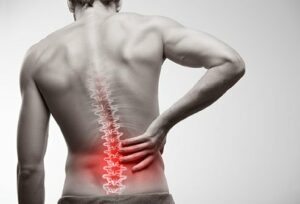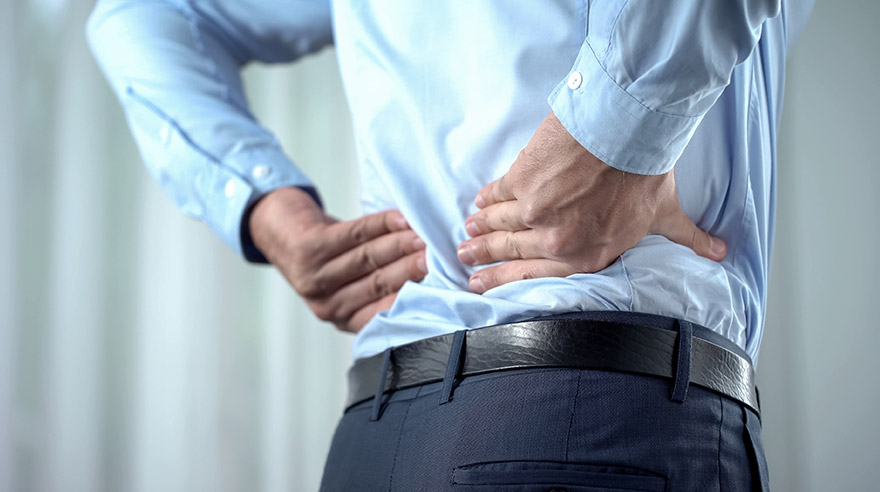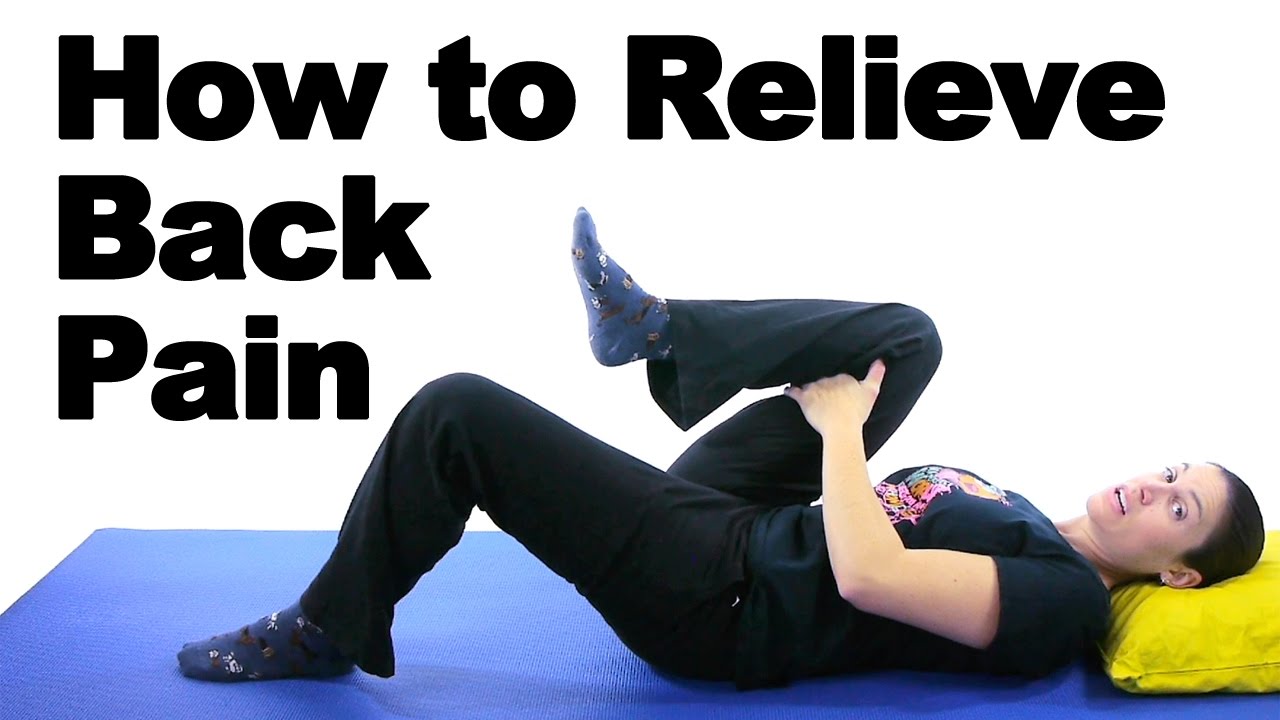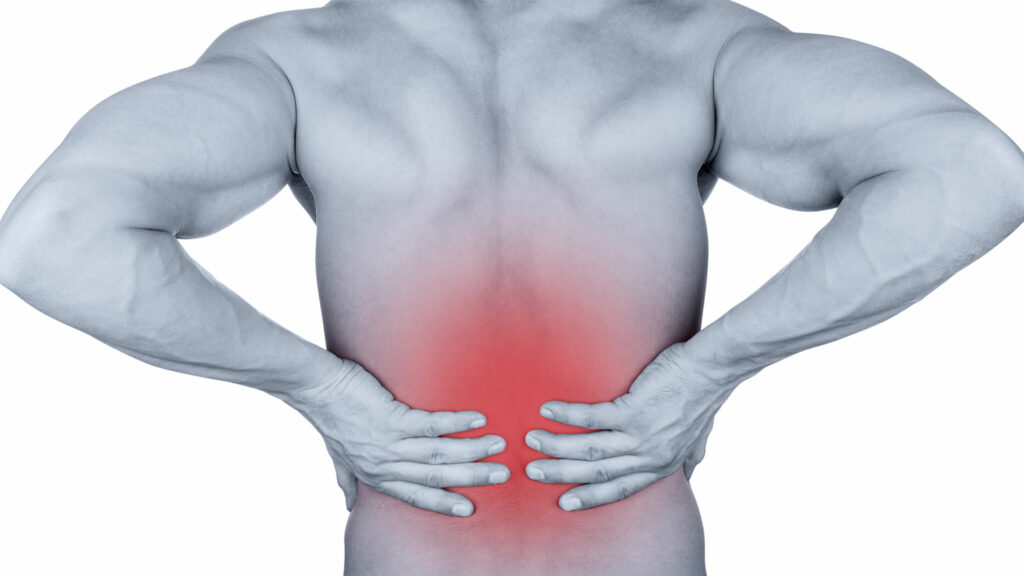Do you suffer from low back pain? If so, you are not alone. Low back pain is one of the most common health problems in the United States. It can be caused by a variety of factors, including muscle strain, arthritis, and herniated disks. In this blog post, we will discuss 15 tips for dealing with low-back pain. These tips will help you reduce inflammation, ease pain, and improve your overall quality of life.
Contents
What Is Low-Back Pain?

Low back pain can be caused by a variety of things but is most often related to strain. Poor posture, repetitive motions, and sitting or standing in one position for long periods can lead to muscle strain. This type of low back pain is usually mechanical (meaning it is not caused by a disease, condition, or injury).
There are two main types of low back pain: acute and chronic. Acute low back pain develops suddenly and typically lasts for a few days or weeks. Chronic low back pain persists for more than three months. Sometimes low back pain is accompanied by leg pain, which is referred to as sciatica.
Low back pain can vary from a dull, constant ache to sudden, sharp pain. It can be mild or severe. You may feel the pain anywhere from your buttocks to your legs.
Signs of Low-Back Pain

There are many signs of low-back pain, but some are more common than others. These include:
Pain that radiates from the low back to the buttocks or legs
One constant sign of low back pain is that the pain will radiate from your low back to your buttocks or legs. This is known as referred pain.
Another sign is muscle weakness. If you experience muscle weakness in your legs, it may be difficult to stand up from a seated position or to walk upstairs. You may also have difficulty standing on your toes.
Other signs of low back pain include:
Numbness or tingling in the legs
Numbness or tingling can occur in the legs if the nerve roots in the spinal cord become compressed. Sometimes this is caused by a herniated disc.
Difficulty standing up or walking
If the pain in your low back is severe, you may have difficulty standing up from a seated position or walking. This can be due to muscle weakness or loss of sensation in the legs.
Constant pain
If you experience constant pain, it is important to see your doctor. This could be a sign of a more serious condition, such as spinal stenosis (narrowing of the spinal canal) or cauda equina syndrome (a rare condition that affects the nerve roots in the lower part of the spinal cord).
Difficulty urinating or having a bowel movement
If you have difficulty urinating or having a bowel movement, it could be a sign of cauda equina syndrome. This is a serious condition that requires immediate medical attention.
Constant pain that gets worse at night
If the pain in your low back is constant and gets worse at night, it could be a sign of degenerative disc disease. Sometimes this condition is also accompanied by pain in the hips or legs.
Causes of Low-Back Pain

There are many different causes of low-back pain, but most often it is caused by strain on the muscles and ligaments that support the spine. Some other common causes include:
Herniated Disc
A herniated disc occurs when the gel-like center of a disc ruptures through a weak area in the surrounding ring. This can put pressure on nearby nerves and cause pain. Sometimes a herniated disc can be caused by repetitive motions or a sudden impact. Sometimes low back pain that is caused by a herniated disc gets better on its own, but sometimes it requires treatment.
Degenerative Disc Disease
Degenerative disc disease is a condition that occurs when the discs in the spine begin to break down. This can be due to age, injury, or repetitive motions. The discs act as cushions between the vertebrae and help absorb shock. As they degenerate, they lose their ability to cushion the spine and the vertebrae begin to rub together. This can cause pain and may require treatment.
Spinal Stenosis
Spinal stenosis is a condition that occurs when the spinal canal begins to narrow. This can put pressure on the nerves in the spine and cause pain. Spinal stenosis can be caused by a variety of things, including age, injury, and degenerative disc disease.
Facet Joint Syndrome
Facet joint syndrome is a condition that occurs when the facet joints (the joints between the vertebrae) become swollen or inflamed. This can lead to pain in the low back. Facet joint syndrome is often caused by repetitive motions or a sudden impact. Also, people with arthritis are more likely to develop facet joint syndrome.
SI Joint Dysfunction
The SI (sacroiliac) joints are the joints between the pelvis and the spine. SI joint dysfunction occurs when these joints become inflamed or irritated. This can lead to pain in the low back. SI joint dysfunction is often caused by repetitive motions, a sudden impact, or pregnancy. Sometimes low back pain that is caused by SI joint dysfunction gets better on its own, but sometimes it requires treatment.
Poor Posture
Another reason for having low back pain is Poor Posture. People who have to sit for long periods are especially susceptible to poor posture and low back pain. When you sit, your spine is in a position of flexion (bent forward). This puts a lot of stress on the muscles and ligaments that support the spine and can lead to pain.
Muscle Strain
Muscle strain is a common cause of low back pain. The low back is made up of a complex network of muscles, tendons, and ligaments. These structures can be strained or torn if they are overused or stretched beyond their limits. Muscle strain can be caused by a variety of things, including lifting heavy objects, sudden movements, and poor posture.
How Does Low-Back Pain Impacts You?
There are many impacts of low back pain on people’s lives. The physical pain and discomfort can be debilitating, but there are also impacts on :
Mental Health
One of the most common psychological consequences of chronic pain is depression. The constant physical pain can lead to feelings of hopelessness, helplessness, and worthlessness. These negative emotions can then feed into a cycle of low self-esteem and further depression.
Sleep
The chronic pain of back problems can make it difficult to get a good night’s sleep. This lack of sleep can then exacerbate the pain, creating a vicious cycle. In addition, sleeplessness can lead to its own set of mental health problems, such as anxiety and irritability.
Work and Activities
Chronic back pain can make it difficult to work or participate in activities you enjoy. This can lead to feelings of isolation and loneliness, as well as financial strain if you are unable to work. Sometimes, chronic pain can even lead to disability.
Relationships
The physical and emotional effects of chronic back pain can take a toll on your relationships. The pain can make you withdrawn and irritable, which can strain even the most supportive of relationships. In addition, the financial impact of dealing with chronic pain can put a strain on relationships as well.
The pain can make you less interested in sex, which can lead to tension with your partner. In addition, the negative emotions associated with chronic pain can make you withdrawn and irritable, making it difficult to maintain close relationships.
Tips for Dealing with Low-Back Pain

There is no one-size-fits-all solution for dealing with low back pain. What works for one person may not work for another. However, some general tips can help you cope with the impact of low back pain on your life:
Find a Support Group
Talking to others who are dealing with chronic back pain can be helpful. Hearing that you are not alone in your experience can make a big difference. In addition, sharing tips and coping strategies can be beneficial. There are many online support groups available, as well as in-person groups in some areas. Sometimes, your local hospital or community center may also offer support groups.
Do Exercise
Regular exercise is important for overall health, but it can also help to alleviate back pain. When you have back pain, you may be tempted to stay in bed and rest. However, this can make the pain worse. Exercise helps to strengthen the muscles in your back and can increase flexibility. This can lead to less pain overall. Talk to your doctor before starting any new exercise routine, especially if you are experiencing severe back pain.
Try To Stretch
Stretching can also help to ease back pain. Hamstring stretches and hip openers are particularly helpful for those with lower back pain. Again, it is important to talk to your doctor before starting any new stretching routine, especially if you are in a lot of pain.
Use Heat or Ice
Applying heat or ice to the affected area can also help to ease back pain. The heat helps to increase blood flow and can relax muscles. Ice can help to reduce inflammation. Try alternating between heat and ice for the best results. Sometimes, over-the-counter topical treatments can also help to provide relief.
Practice Good Posture
Maintaining good posture is important for overall health, but it is also crucial for those with back pain. Slouching puts unnecessary strain on the back muscles and can lead to pain. When sitting, be sure to keep your back straight and supported. When standing, keep your weight evenly distributed on both feet.
Wear Comfortable Shoes
Wearing comfortable shoes is also important for those with back pain. High heels and other uncomfortable shoes can put a strain on the back and lead to pain. Choose shoes that are supportive and provide good arch support.
Sleep on a Firm Mattress
Sleeping on a firm mattress is important for back pain sufferers. A soft mattress can worsen back pain by not providing enough support. You may need to experiment with different mattresses to find one that works for you. Sometimes, placing a board under your mattress can also help to provide the extra support you need.
Lose Weight
If you are overweight, losing weight can help to reduce the amount of stress on your back. This can lead to less pain overall. If you are having trouble losing weight, talk to your doctor about a weight loss plan that is right for you.
Quit Smoking
Smoking is bad for overall health, but it can also contribute to back pain. Smoking decreases blood flow and can make it difficult for the discs in your back to heal. If you smoke, quitting is the best thing you can do for your health.
See a Doctor
If you are dealing with chronic back pain, it is important to see a doctor. Your doctor can help to diagnose the cause of your pain and recommend treatment options. Sometimes, physical therapy or surgery may be necessary. Don’t hesitate to get the help you need to manage your pain.
Get a Massage
Massage can be very beneficial for those dealing with back pain. It can help to increase circulation, reduce inflammation, and relax muscles. If you are unable to get a professional massage, try using a massager at home or asking a friend or family member for a massage. Also, these massages will help a lot.
Use Essential Oils
Essential oils are another possible treatment for back pain. Some people find that certain oils, such as lavender or peppermint, can help to ease the pain. You can apply essential oils topically or add them to a diffuser to inhale the fumes.
Acupuncture
Acupuncture is a traditional Chinese healing practice that involves inserting thin needles into the skin at specific points on the body. Some research has shown that acupuncture can help treat chronic back pain. These treatments will help a lot.
Yoga
Yoga is a type of exercise that can help to ease back pain. It involves stretching and strengthening the muscles, which can help to improve flexibility and range of motion. Yoga can also help to improve your posture.
Conclusion
Low-back pain affects millions of people around the world each year. For some, the pain is acute and goes away quickly; for others, it is chronic and debilitating. But no matter how long you have to deal with it, there are ways to find relief. The following tips can help you cope with your low back pain and get on with your life.
Sometimes, the best thing you can do for your back is to keep moving. Exercise helps to strengthen the muscles that support your back and can increase your flexibility. Just be sure to start slowly and build up gradually.
Physical Therapy help patients recover from pain. If you’re experiencing Back pain, Shoulder pain, Knee pain, Neck pain, Elbow pain, Hip pain, or Arthritis pain, a physical therapist at MantraCare can help: Book a physiotherapy session.


